Eid-ul-Milad Greetings: Life and Times of Prophet Muhammad(PBUH)
A brief account of the life and times of Prophet Muhammad(PBUH) on the occasion of his birthday.
Understanding Prophet Muhammad(PBUH): An Insightful Journey on Eid-ul-Milad
Introduction
As India, and indeed the world, observes Eid-ul-Milad, the birth anniversary of Prophet Muhammad (Peace Be Upon Him-PBUH), it’s a wonderful opportunity for everyone, especially the non-Muslims, to gain insight into a a revered personage who has shaped history and continues to influence billions of lives. This article aims to offer a succinct yet comprehensive look at the life of Prophet Muhammad (PBUH), highlighting his enduring legacy and explaining, inter alia, why visual depictions of him are considered disrespectful in Islam.
Jesus Christ and Prophet Muhammad (PBUH)
As we delve into the life and teachings of Prophet Muhammad (PBUH), it's worth noting the parallels with other spiritual figures, including Jesus, who is revered in Islam as a great prophet, though not considered divine. Much like Prophet Muhammad (PBUH), Jesus also advocated for unmediated access to God and was driven by a keen sense of social justice. Both challenged the established powers of their time, serving as beacons of moral and ethical conduct. In Islam, Jesus is held in high regard, along with other prophets like Moses and Abraham, emphasising the interconnectedness of these religious traditions. This shared lineage illustrates how history and theology are often inextricably interwoven, shaping the social and moral landscape for billions around the globe.
Humble Disclaimer
As someone who is not a scholar in Islamic studies, I have made a diligent effort to ensure the accuracy of the information presented, whilst maintaining the utmost respect and reverence for Prophet Muhammad (PBUH). Despite these efforts, if an inadvertent error has occurred, I extend my sincere apologies in advance. I would be grateful if you could kindly bring any such oversight to my attention via email, so that I can take immediate corrective action.
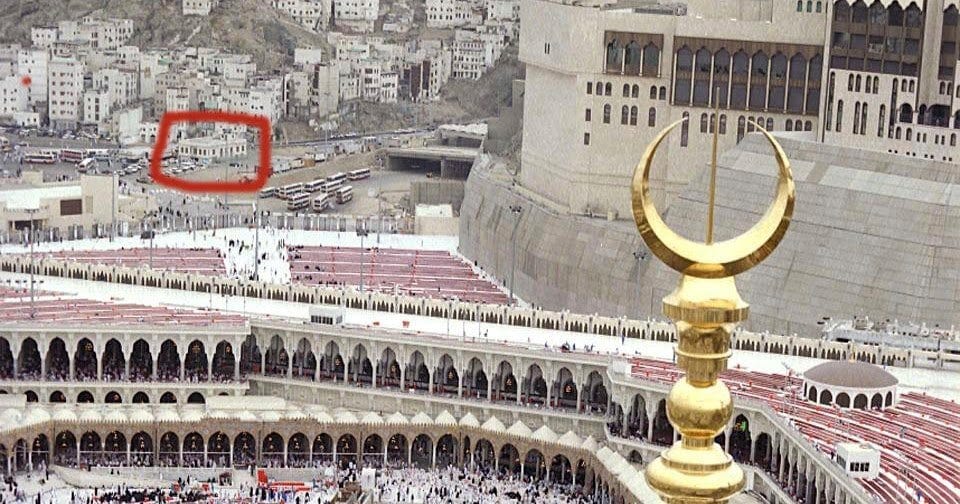
Early life and adulthood
Prophet Muhammad (PBUH) was born in Mecca around 570 CE, a city that was a bustling trade centre in the Arabian Peninsula. Born into the respected Quraysh tribe, he belonged to a lineage that were the custodians of the Kaaba, the most sacred site in pre-Islamic Arabia. Despite his noble background, his early life was fraught with challenges. His father, Abdullah ibn Abd al-Muttalib, passed away a few months before his birth, and his mother, Amina bint Wahb, died when Muhammad (PBUH) was just six years old. He found himself orphaned and vulnerable in a city that was rapidly changing.
What is often overlooked is that Mecca was not merely a religious centre but a hub of commerce, where old tribal values had deteriorated, and wealth had become concentrated in the hands of a select few. In this climate, even a well-born orphan like Muhammad (PBUH) was considered more of a burden than a blessing. Prophet Muhammad's mother, desperate to ensure her son's safety, found him a wet nurse, Haleema, from the desert. It was in the harsh yet egalitarian environment of the Beduins' desert that Muhammad (PBUH) was fostered, absorbing values that would later guide his life's mission.
Returning to Mecca after his formative years in the desert, the young Muhammad (PBUH) found himself at odds with the city's shifting social fabric. While the wealthy elite ran Mecca as an oligarchy, he saw the grim reality of social injustice all too clearly. This perception would become the cornerstone of his later mission.
With this newfound perspective, Muhammad (PBUH) took on roles in trade to support his family, which not only expanded his horizons but also honed his skills in negotiation and commerce. Despite the adversity he faced, he was known for his honesty and reliability, earning him the nickname Al-Amin, or "the Trustworthy."
By the time he reached adulthood, Prophet Muhammad (PBUH) had already seen both the challenges and opportunities life had to offer. His early life, steeped in personal adversity, coupled with his exposure to social injustice in Mecca, laid the foundation for his commitment to social reform. It is this blend of life experiences and insights into the harsh disparities of his society that shaped him into the Prophet of Islam, guiding his mission and forging his enduring legacy.
Marriage and Family: A Union Built on Love, Respect, and Partnership
At the age of 25, a pivotal chapter in Prophet Muhammad’s (PBUH) life unfolded when he married Khadijah bint Khuwaylid, a widow 15 years his senior. Contrary to the social norms of 7th-century Arabia, where marriages were often arranged for economic or political gain, their union was notably different. It was founded on mutual respect, love, and a shared vision for a better society.
Khadijah was not just any woman of her time; she was a highly successful businesswoman who managed her own trade caravans and had a keen eye for talent. Recognising Muhammad's honesty and skill in commerce, she initially hired him to manage a trading expedition to Syria. Muhammad exceeded her expectations, bringing back profits higher than she had anticipated and conducting himself with integrity throughout the venture.
Deeply impressed, Khadijah proposed marriage to Muhammad through a confidante. In a society where men typically took the initiative for marital proposals, this was a significant gesture, marking the first of many social conventions their relationship would challenge. Muhammad (PBUH), already captivated by Khadijah's intelligence, independence, and kindness, accepted her proposal, forever altering the course of both their lives.
The bond between Muhammad (PBUH) and Khadijah was not just that of husband and wife; they were also confidantes and partners in a deeply spiritual and emotional journey. Khadijah became Muhammad’s first follower when he began preaching Islam, offering unwavering support in the face of immense societal backlash. She was his rock during the most challenging times, especially when the Meccan leaders ostracised him and subjected him to all forms of persecution.
Together, they had six children—four daughters named Zainab, Ruqayyah, Umm Kulthum, and Fatimah, and two sons, Qasim and Abdullah, who unfortunately died young. Each of their children was brought up in an environment of love, intellectual curiosity, and ethical grounding, embodying the principles that both parents held dear.
Khadijah's death, almost 25 years into their marriage, was a devastating blow for Prophet Muhammad (PBUH), leading him to dub the year of her passing as the "Year of Sorrow." Her absence was deeply felt, not just as a loving spouse but as an advisor and partner in his mission.
Thus, their marriage was more than just a social contract; it was a divine partnership that served as a beacon of mutual respect, equality, and love. The marital life of Prophet Muhammad (PBUH) and Khadijah redefined gender roles and set new standards for marital relationships, leaving a legacy that continues to inspire couples within and beyond the Islamic community.
The Turning Point: Prophethood and the Dawn of a New Spiritual Epoch
At the age of 40, a reasonably mature Muhammad (PBUH) experienced an event that would irrevocably change not just his life, but also the spiritual landscape of the world. What began as a routine act of meditation in the cave of Hira, located just a few miles from Mecca, transformed into a celestial encounter that marked the commencement of his prophethood.
Muhammad (PBUH) often retreated to the cave of Hira for periods of deep contemplation and spiritual introspection, seeking solace from the societal ills that troubled him. It was during one such retreat, in the quiet solitude of the cave, that he was visited by the Angel Gabriel, known as Jibreel in Arabic. The angel conveyed to him a revelation in the form of a simple but powerful command: "Recite!" or "Read!" (Iqra in Arabic).
Initially overwhelmed and deeply shaken by this extraordinary experience, Muhammad (PBUH) rushed back to his home. It was Khadijah who comforted him and assured him of the divine nature of his experience. Shortly after this initial revelation, the Angel Gabriel visited Muhammad (PBUH) again, bringing more messages from God. These divine revelations continued over the next 23 years and were meticulously memorised and recorded by his followers. These became the verses of the Quran, the holy book of Islam that serves as a comprehensive guide for the spiritual, ethical, and social conduct of Muslims.
Early Challenges
The transition to prophethood was not without its challenges. Prophet Muhammad (PBUH) had to deliver God's message to a largely polytheistic society entrenched in social injustices and economic inequality. The Meccan elites, whose power and wealth were threatened by Prophet Muhammad's (PBUH) monotheistic message and social reforms, opposed him bitterly. Yet, fortified by divine guidance and a steadfast resolve, Prophet Muhammad (PBUH) pressed on. In this light, he emerges as a great crusader against injustice, his spiritual life and preaching likewise focused on this noble goal of brotherhood among believers.
An important facet of Prophet Muhammad's (PBUH) moral grounding can be traced back to his early years with the Bedouins in the desert. Fostered by Halimah, the Bedouin wet nurse, he was exposed to a culture remarkably different from the commercial hustle and bustle of Mecca. The desert life, although austere, fostered a strong sense of community and egalitarianism, virtues that were dwindling in his native city. It was this formative experience in the egalitarian Bedouin culture that contributed to his intense focus on social justice and moral responsibility when he returned to Mecca, a city increasingly dominated by greed and economic disparities.
Divine Revelations
The revelations didn’t just address matters of worship and spirituality; they also laid out principles for social justice, economic fairness, and individual rights, creating a holistic way of life aimed at both personal purification and societal reform. This new religious and ethical code aimed to transcend tribal affiliations and create a unified community, or Ummah, bound by faith and mutual respect.
The prophethood of Muhammad (PBUH) wasn’t just the inception of a new religion; it was the dawn of a new era of spiritual consciousness and social justice. Over two decades of prophethood, Prophet Muhammad (PBUH) not only altered the spiritual ethos of the Arabian Peninsula but also established a legacy of ethical principles and social reforms that continue to resonate globally.
Social Reforms: The Prophet as a Vanguard of Change
Prophet Muhammad (PBUH) was not just a man of spirituality; he was also a visionary social reformer whose teachings have had a lasting impact on societal norms and values. His revelations were not confined to matters of prayer and piety but spanned an array of social issues, targeting injustices and advocating for change.
Women's Rights
In a society where women were often treated as mere property, Prophet Muhammad's (PBUH) teachings were revolutionary. He abolished practices like female infanticide and provided women with unprecedented rights to own property, receive an education, and participate in civic life. Women were granted the right to enter into contracts, work outside of the home, and even initiate divorce under specific circumstances.
Social Equality and Justice
In a deeply hierarchical and tribal society, Prophet Muhammad’s (PBUH) message of social equality was groundbreaking. He undermined the existing social hierarchies based on lineage and wealth, advocating instead for a community where individuals were judged based on their character and piety. His Last Sermon is often cited as a charter of human rights, wherein he declared that all Muslims are brothers and sisters, and no Arab has superiority over a non-Arab, nor does a non-Arab have any superiority over an Arab; also, a white has no superiority over a black, nor does a black have any superiority over a white.
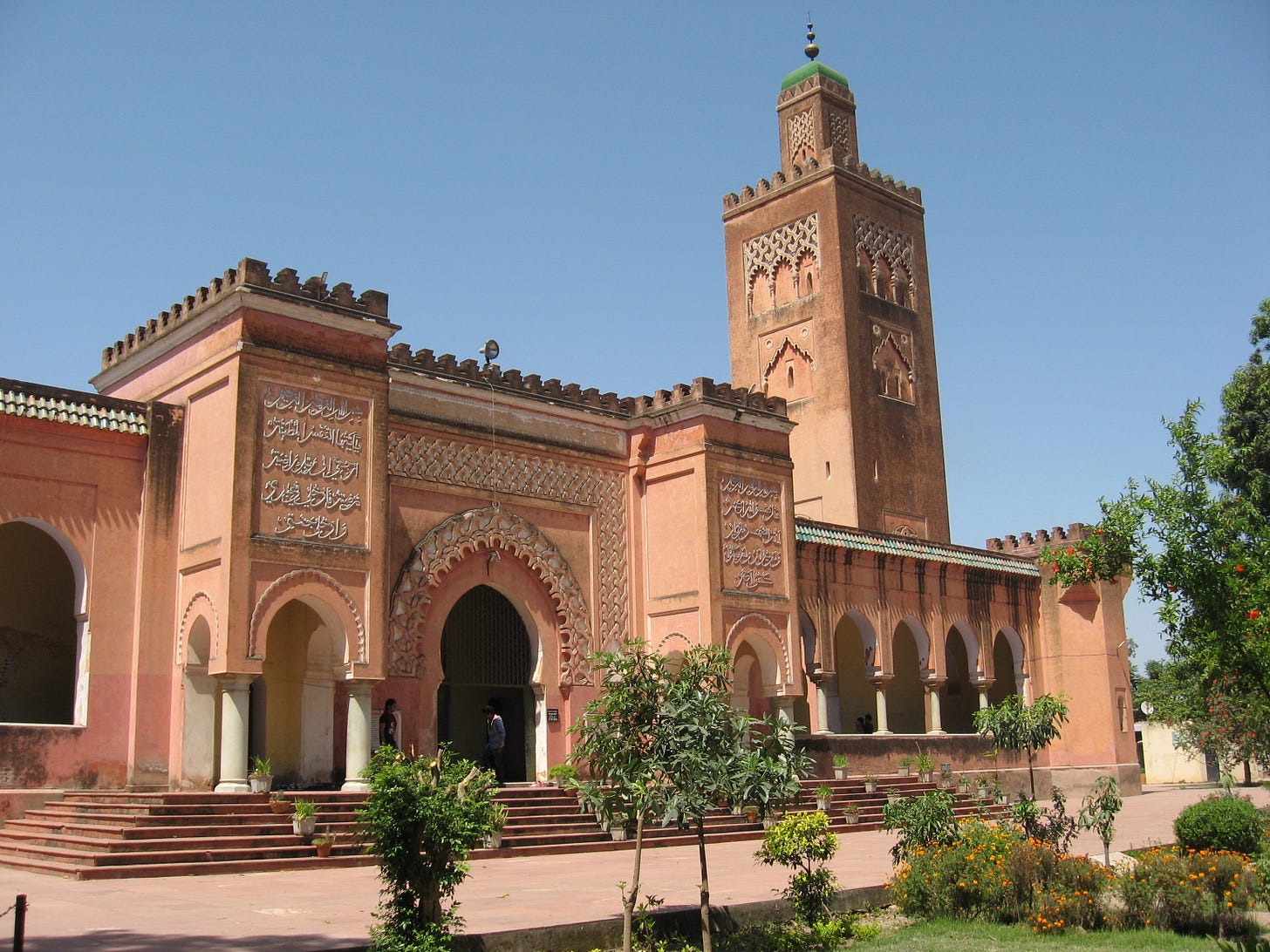
Charity and Economic Fairness
One of the Five Pillars of Islam is Zakat, or charity, an obligatory form of almsgiving. Prophet Muhammad (PBUH) emphasised the importance of redistributing wealth to mitigate poverty and inequality. He laid out guidelines for fair trade and ethical business practices, encouraging an economic system that would benefit the wider community rather than just a privileged few.
Hadith and its Status Relative to the Quran
In addition to the Quran, the Hadiths serve as another important source of Islamic teachings. The term "Hadith" refers to the sayings, actions, and approvals of Prophet Muhammad (PBUH), which were meticulously collected and authenticated by scholars after his death. While the Quran is considered the eternal and unaltered word of God, Hadiths are human compilations aimed at preserving the Prophet's wisdom and practices.
Though not divine, Hadiths are highly respected and serve to clarify and elaborate on the principles laid out in the Quran. They play an essential role in shaping Islamic jurisprudence and are often consulted in matters that are not explicitly covered in the Quran.
In sum, Prophet Muhammad’s (PBUH) social reforms were truly transformative, laying the groundwork for a society rooted in justice, equality, and ethical conduct. His teachings, preserved in the Quran and elaborated upon in the Hadiths, continue to serve as a moral and social compass for billions around the world.
The Migration to Medina: The Turning Point that Redefined History
In 622 CE, amidst escalating hostility and persecution in Mecca, Prophet Muhammad (PBUH) undertook a significant journey that would profoundly alter the course of Islamic and world history. This migration, known as the Hijrah, was not merely a geographical relocation but a transformative event that signalled a new phase in the Islamic mission. It was a journey laden with risk, faith, and the promise of a new beginning, and it marks Year One in the Islamic lunar calendar.
The Climactic Build-Up
By the time of the Hijrah, Prophet Muhammad (PBUH) and his fledgling community of believers had endured over a decade of increasing persecution in Mecca. Despite the social and economic sanctions levied against them, the early Muslims remained steadfast in their faith. However, the unyielding hostility from the Quraysh, the ruling tribe in Mecca, made it abundantly clear that Prophet Muhammad's (PBUH) mission was under existential threat.
The Strategic Choice of Medina
Medina, then known as Yathrib, offered a sanctuary that Mecca could not. The city was in the throes of a civil conflict and saw in Muhammad a neutral party who could bring an end to their internal strife. Moreover, segments of the city's population had already accepted Prophet Muhammad's (PBUH) prophethood and were eager to welcome him. This social and political milieu presented an unprecedented opportunity for the Muslims to practice their faith freely and to lay the foundations for an Islamic society.
The Perilous Journey
The actual migration was fraught with dangers. The Quraysh had gotten wind of Prophet Muhammad's (PBUH) plans and set a bounty on his head. Evading capture and assassination attempts, Prophet Muhammad (PBUH) and his closest companion, Abu Bakr, took refuge in the Cave of Thawr. For three days, they hid there while the Quraysh searched for them in vain. Guided by divine providence and aided by a series of fortunate events, they finally reached the outskirts of Medina.
A New Chapter: The Formation of the Ummah
Upon his arrival in Medina, Prophet Muhammad (PBUH) immediately set about establishing the foundations for an Islamic state. He drafted the Constitution of Medina, a remarkable document that guaranteed religious freedom for all citizens, including Jews and pagans, and created a sense of community or 'Ummah' among the disparate tribes. This newfound unity enabled the Muslims to face the subsequent challenges, including military attacks from Mecca, with resilience and solidarity.
Legacy of the Hijrah
The Hijrah symbolises a pivotal transition in Islamic history, from passive resistance to active state-building. It serves as an inspiration for Muslims worldwide, reminding them that sacrifices and struggles are integral to the preservation and propagation of faith. The migration to Medina not only offered a safe haven for the early Muslim community but also provided a fertile ground where the teachings of Islam could flourish and crystallise into a comprehensive way of life.
In this regard, the Hijrah is not just an event but a cornerstone in the annals of Islamic and world history, encapsulating lessons of faith, courage, and the transformative power of a unified community.
The Conquest of Mecca: A Triumph of Compassion and Spiritual Homecoming
Eight years following the epoch-making migration from Mecca to Medina, Prophet Muhammad (PBUH) set out on a journey that would culminate in one of the most momentous events in Islamic history—the peaceful conquest of Mecca. This was not just a military victory but also a significant milestone that showcased the indomitable power of faith, foresight, and forgiveness.
The Build-up to the Conquest
By the time Prophet Muhammad (PBUH) prepared to return to Mecca, the Islamic community in Medina had grown in both size and strength. Skirmishes and battles had been fought with the Quraysh, most notably the Battles of Badr, Uhud, and the Battle of the Trench. A pivotal moment occurred with the Treaty of Hudaybiyyah, a 10-year peace accord between the Muslims and the Quraysh. However, the treaty was eventually violated by the Quraysh, thereby providing the Muslims with a casus belli to retake Mecca.
A Unique Military Campaign
Prophet Muhammad (PBUH) gathered an army of approximately 10,000 followers and advanced toward Mecca. Despite their numerical superiority and the just cause they held, Prophet Muhammad (PBUH) instructed his troops to avoid conflict if possible. His intentions were not to lay waste to the city that had expelled him but to cleanse it of idolatry and reintroduce the monotheistic faith of Abraham.
The Peaceful Takeover
As the Muslim army approached, resistance crumbled. The Quraysh realised that fighting the Prophet (PBUH) was futile and surrendered without bloodshed. Prophet Muhammad (PBUH) entered Mecca not as a conquering warlord but as a humble servant of God. His first act was to proceed to the Kaaba, the sacred cubic structure at the centre of Mecca, which had been filled with idols and images from various faiths.
Purification of the Kaaba
The Kaaba, originally built by Abraham as a house of monotheistic worship, had been desecrated over the years with the placement of idols. Prophet Muhammad (PBUH) took upon himself the task of purifying this most sacred site. In a symbolic act, he ordered all 360 idols to be removed and destroyed, thereby restoring the Kaaba to its original sanctity.
Magnanimity in Victory
Perhaps the most striking aspect of the conquest was Prophet Muhammad's (PBUH) magnanimity towards the vanquished. He declared a general amnesty, forgiving even his staunchest enemies, including those who had sought to kill him. This act of largesse was not just political wisdom; it was a living example of the Islamic principles of mercy and forgiveness.
Lasting Legacy
The conquest of Mecca serves as an exemplar of how victories can be achieved through moral strength, strategic wisdom, and a profound sense of justice and compassion. It marked the de facto end of idol worship in the Arabian Peninsula and the consolidation of Muslim communities into a unified religious polity. The event holds a dual significance: it was a homecoming for Prophet Muhammad (PBUH) and a reaffirmation of the Kaaba's status as a centre of monotheistic worship.
The peaceful nature of the conquest, combined with Prophet Muhammad's (PBUH) subsequent acts of mercy, highlights a critical dimension of Islamic ethics—that strength must be paired with compassion, and that justice is not vengeance but the restoration of balance and harmony.
Why No Visual Depictions of Prophet Muhammad (PBUH): An Exploration of Theological and Cultural Sensitivities
One question that often puzzles those outside the Islamic faith is the prohibition against the visual depiction of Prophet Muhammad (PBUH). This injunction is not merely a restrictive tenet but is rooted in nuanced theological principles and cultural sensitivities.
The Principle of Tawhid
Central to Islam is the concept of 'Tawhid' or the Oneness of God. To preserve this Oneness, Islam vehemently discourages any form of idolatry or polytheism. Creating images or visual depictions of Prophet Muhammad (PBUH), or indeed any other prophets, poses a risk of diverting focus from God's unity to the veneration of individuals. This can dilute the essential monotheistic message of Islam and lead to the sort of idol worship that Prophet Muhammad (PBUH) spent his life combatting.
Avoiding the Cult of Personality
Islam puts great emphasis on the teachings of Prophet Muhammad (PBUH) as a guide to living a moral and spiritual life. The fear is that visual depictions could lead to a 'cult of personality,' where the emphasis shifts from the philosophical and ethical teachings of the Prophe (PBUH) to his physical appearance. This shift can result in the loss of the essence of Prophet Muhammad's (PBUH) message, which is a life lived in accordance with God's will.
Historical Context
In the early days of Islam, converts came from various religious backgrounds that included different forms of idol worship. The prohibition against visual depictions was a radical but necessary departure from the existing religious practices of the Arabian Peninsula. This helped new converts to break decisively with their past religious traditions and to prevent any syncretic mixing that could confuse the new monotheistic message.
A Show of Respect and Reverence
For Muslims, Prophet Muhammad (PBUH) is not just a historical figure but the 'Seal of the Prophets,' whose life and teachings are to be followed in every detail. Any attempt to capture his essence through artwork is seen as inherently insufficient and therefore disrespectful. It is considered impossible for any human creation to encapsulate the profound spiritual significance and the high moral and ethical standing of the Prophet (PBUH).
How Non-Muslims Can Show Respect
While the prohibition primarily concerns Muslim communities, it is considered respectful for non-Muslims to also refrain from depicting Prophet Muhammad (PBUH). Understanding and respecting this aspect of Islamic culture is an essential part of interfaith dialogue and mutual respect.
The absence of visual depictions of Prophet Muhammad (PBUH) is not a void but a space filled with the richness of his teachings and the intensity of his followers' devotion. This unique aspect of Islam serves to keep the focus on the essence of the faith: a submission to the One God and a commitment to living a life in line with ethical and spiritual principles.
Legacy: The Sunni and Shia Perspectives on Prophet Muhammad
The passing of Prophet Muhammad(PBUH) in 632 CE left an indelible mark on the fabric of Islam and led to questions about succession that would eventually crystallise into the two major Islamic denominations: Sunni and Shia. Though separated by theological and historical distinctions, both Sunni and Shia Muslims are united in their reverence for Prophet Muhammad (PBUH).
The Question of Succession
The immediate aftermath of Prophet Muhammad's (PBUH) death saw the Muslim community grappling with the issue of who should succeed him as the leader, or Caliph, of the Islamic nation. Sunni Muslims believe that Abu Bakr, Prophet Muhammad's (PBUH) close companion and father-in-law, was rightfully the first Caliph, as he was chosen by the Muslim community (Ummah). They emphasise the notion of a democratic selection and hold that the Prophet (PBUH) did not appoint a successor but left the decision to the Ummah.
Shia Muslims, on the other hand, assert that Prophet Muhammad (PBUH) had designated his cousin and son-in-law, Ali ibn Abi Talib, as his successor. They argue that leadership should remain within the Prophet’s family and hold a doctrine of Imamate, where each Imam is considered infallible and divinely chosen.
Theological Similarities and Differences
Both Sunni and Shia Islam adhere to the Five Pillars of Islam and regard the Quran as the holy book. However, their traditions differ when it comes to Hadiths—teachings and practices of Prophet Muhammad (PBUH). Sunni Muslims follow the Hadiths recognised by their scholars, while Shia Muslims have their own set of Hadiths attributed mainly to Imam Ali and subsequent Imams.
Ritualistic Differences
Both Sunni and Shia perform the five daily prayers, fast during Ramadan, and believe in giving alms. Yet, there are subtle differences in the way these rituals are carried out, most notably in the prayer postures and the details of the juristic laws.
The Veneration of Figures
Sunni Muslims regard all four of the initial Caliphs (Rashidun) as rightful and pious leaders. In contrast, Shia Muslims have a special devotion to Ali and his descendants, believing them to be the true spiritual and political leaders of Islam. The events of Karbala, where Imam Hussein, Ali’s son, was martyred, hold particular significance in Shia tradition and are commemorated annually during Ashura.
A Shared Reverence
Despite these differences, both Sunni and Shia revere Prophet Muhammad )PBUH) as the final Prophet and consider him the epitome of virtue and the quintessential guide to leading an Islamic life. The core ethical principles, monotheistic beliefs, and foundational texts remain consistent across both denominations.
Legacy in the Modern World
The differences between Sunni and Shia have often been exacerbated by geopolitical factors, but at the heart, both groups share a profound respect for Prophet Muhammad (PBUH). His teachings continue to influence the lives of approximately 1.8 billion Muslims worldwide, cutting across cultural, ethnic, and sectarian lines.
Understanding the nuances between Sunni and Shia interpretations allows for a richer, more comprehensive view of Prophet Muhammad's (PBUH) impact on the world, an impact that extends beyond sectarian lines to touch the lives of individuals and communities globally.
Conclusion: A Life That Continues to Inspire Across Boundaries
As billions of Muslims all over the world come together to celebrate Eid-ul-Milad, commemorating the birth of Prophet Muhammad (PBUH), it becomes imperative to pause and reflect on the enduring legacy of this monumental figure. His teachings on compassion, social justice, and spiritual mindfulness have transcended time, and continue to serve as a guiding light in a world grappling with complex challenges.
Bridging Cultural and Religious Gaps
The resonance of Prophet Muhammad's (PBUH) teachings is particularly relevant to the diverse, pluralistic fabric of India. Interfaith harmony and co-existence are values deeply embedded in Indian society, and a greater understanding of the Prophet’s life contributes towards enriching this pluralism.
Islam in the Global Context
Today, Islam is one of the world's major religions, boasting approximately 1.8 billion followers—nearly a quarter of the global population. The Islamic world spans multiple continents, including several nations where Islam is the state religion. The impact of Prophet Muhammad's (PBUH) teachings is not merely historical or theological; it's a living, breathing tradition that shapes geopolitics, ethics, and cultures in the 21st century.
A Universal Message
Prophet Muhammad’s (PBUH) message is universal, cutting across distinctions of race, class, and nationality. Whether it's fighting for social justice, supporting gender equality, or advocating for environmental stewardship, the principles he espoused are more relevant today than ever before. As we witness the struggles for justice and equality around the globe, the Prophet’s message serves as an eternal guidepost.
Felicitations on this Pious Occasion
This Eid-ul-Milad offers us a timely reminder of these noble principles. It's an opportunity not only for Muslims but for all people to reflect upon and aspire towards the high moral and ethical standards set by Prophet Muhammad (PBUH).
So, let us take this occasion to extend our warmest greetings to our Muslim brethren. May this Eid-ul-Milad be a harbinger of peace, unity, and understanding among all communities, as we strive collectively to live out the enduring legacy of Prophet Muhammad (PBUH).
ACKNOWLEDGEMENT: My heartfelt gratitude goes to a cherished friend on Twitter, who is both enlightened and devout in his Islamic faith, for his invaluable review of this article. His insights into the life, social mores, and challenges of the tribal desert existence during Prophet Muhammad's (PBUH) time, as well as its rich ethical fabric in contrast to the commercial ethos of Mecca, were truly enlightening. While I'm immensely thankful for his contributions, I must respect his wish to remain anonymous and therefore cannot reveal his identity. Thank you!

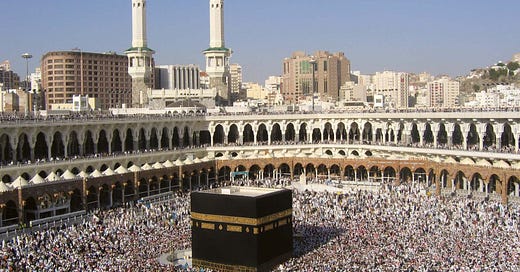



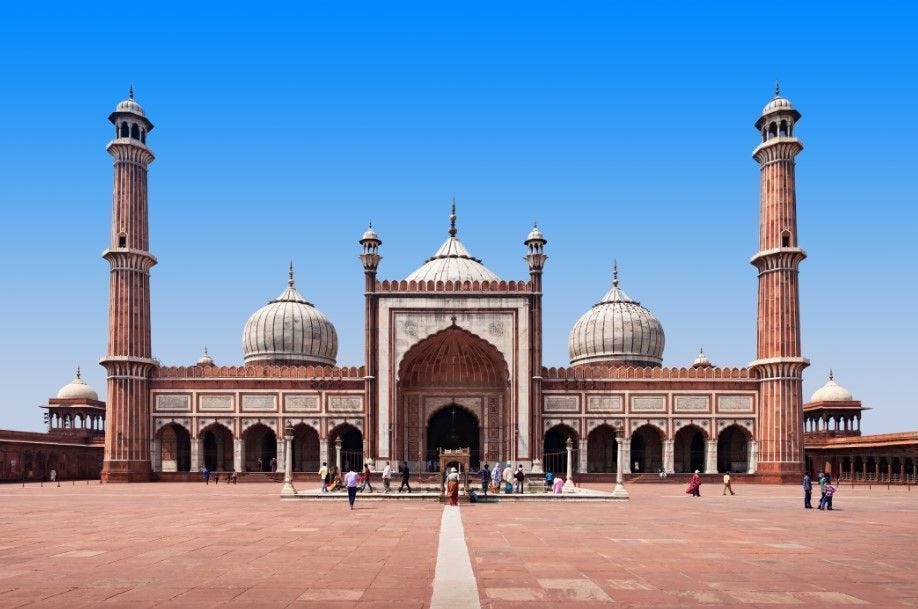
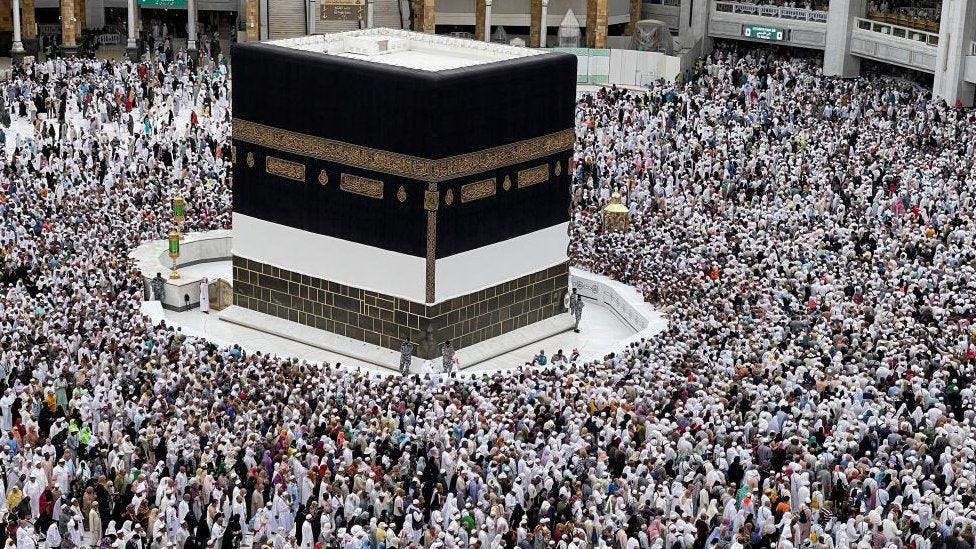
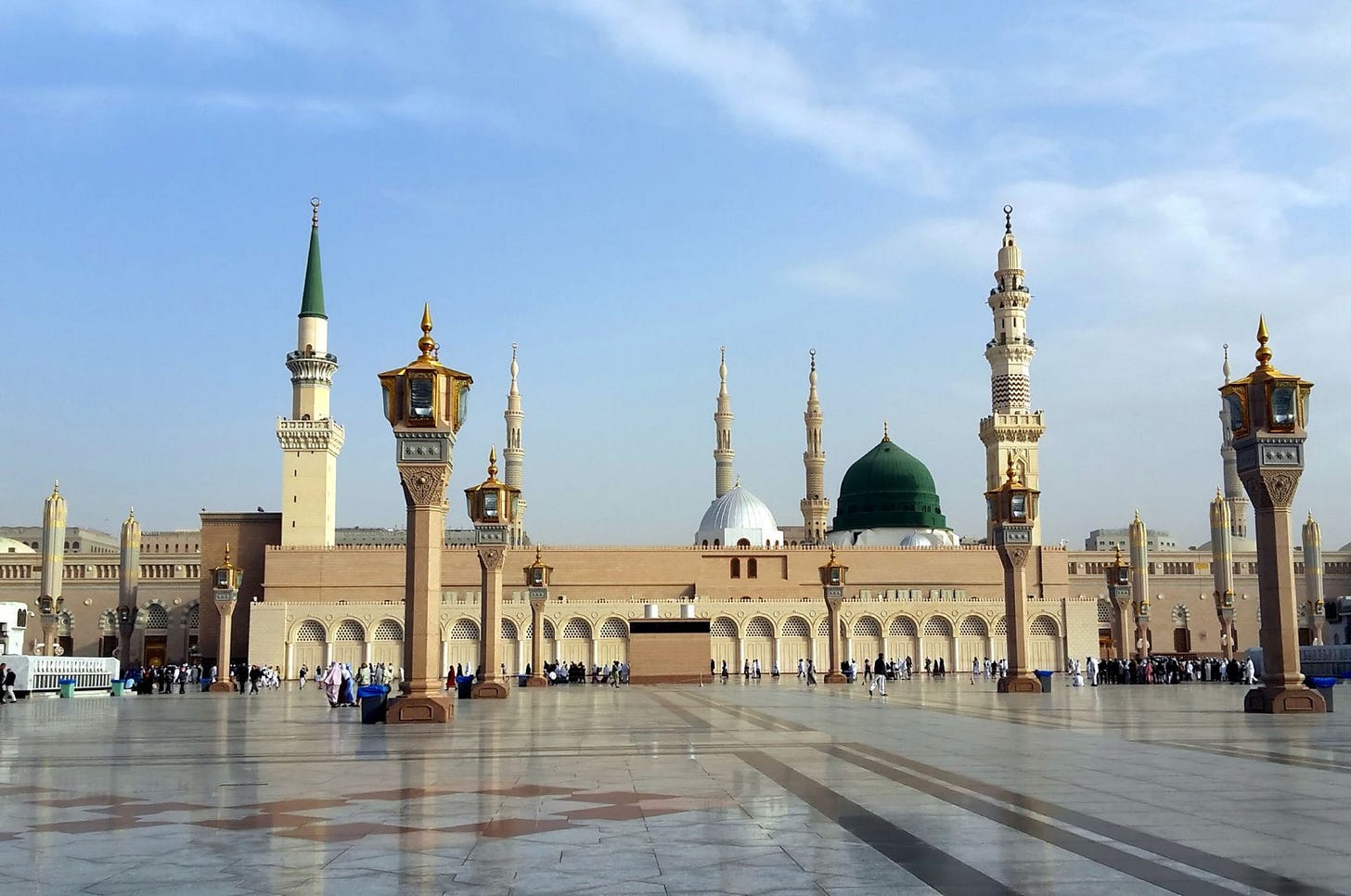
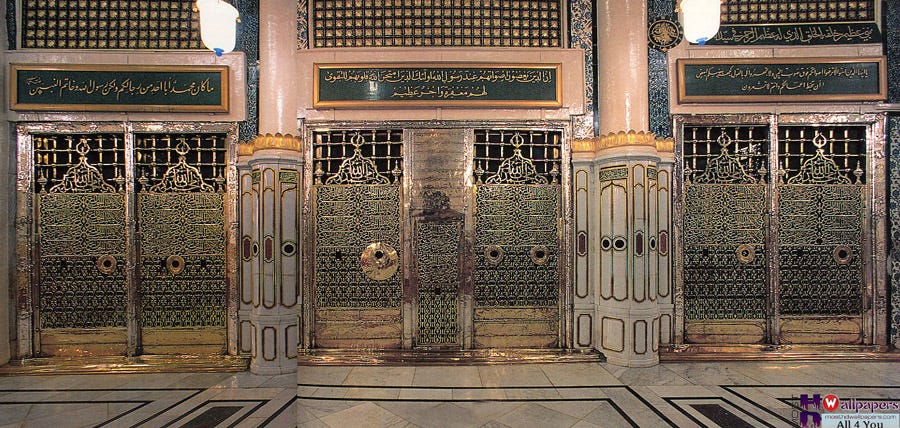
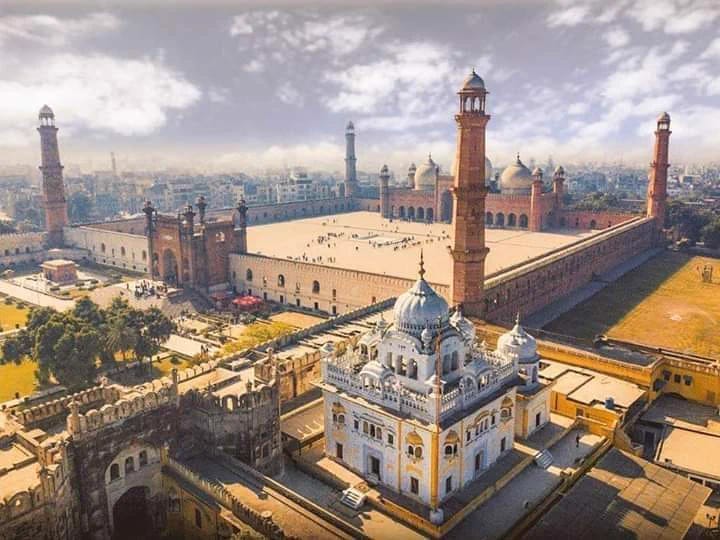
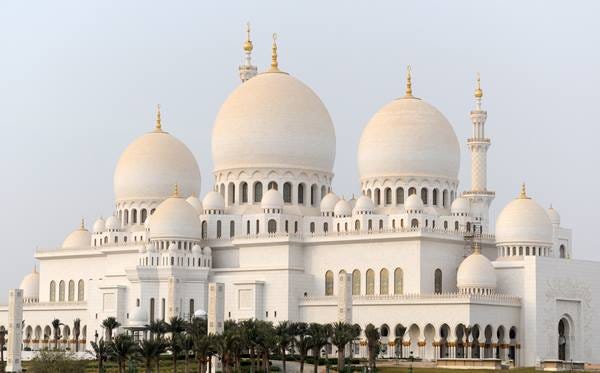
Mr. Sidhu: very educational for me. I shared it some of Pakistani friends from my Alma mater . Here are some comments :
Sir. yes very thoughtful of you!
( Saleem Beg Karachi)
Thank you for your thoughtfulness
( Sami - Washington DC)
Thanks Sir!
A good insightful article, reminding people about the truth in teachings of prophet (PBUH)—a progressive nature of religion Islam with regards to “women rights” and “respect” for other believes!! In today’s era of divides, ignorance & arrogance (Talibans- mostly cultural), the article is great to point out:
“He drafted the Constitution of Medina, a remarkable document that guaranteed religious freedom for all citizens, including Jews and pagans, and created a sense of community or 'Ummah' among the disparate tribes.“
( Khawar Hasan- Islamabad )
Beautiful.
Here's a post from Jan Vichar Samvaad on Facebook, containing a naat by Darshan Singh Duggal (1921-1989), celebrating Id-i-Milad and India's diversity at the same time:
कल बारावफात है । पैगम्बर हज़रत मोहम्मद साहब से जुड़ा हुआ दिन,आज हर तरफ रौशनी है । शाम जगमगा रही हैं, अपने रसूल,अपने नबी को याद करने के लिए । हमारा लखनऊ लोबान की खुशबू में महक रहा है, अमीनाबाद से मौलवीगंज, रक़ाबगंज, यहियागंज,नदानमहल,नक्खास,टूड़ीयागंज,खालाबाज़ार,हैदरगंज,ऐशबाग तक एक चमक बिखरी पड़ी है,बयान चल रहे हैं, नातें हवा में गूंज रही हैं, इस्लामिया कॉलेज का मैदान चहक उठा है।
यह तो हमारे लखनऊ का हाल है, बल्कि सारी दुनिया आजकी रात उस नबी को याद कर रही है, जिसने मानवता और बराबरी के लिए एक मिसाली ज़िन्दगी जीकर दिखाया और जो बहुत कम वक़्त में सारी दुनिया में अपनाया गया । आज उन्ही नबी की शान में आपके सामने शायर दर्शन सिंह दुग्गल साहब की कलम रख रहे हैं, देखिये हमारी माटी ऐसी ही थी,हमारा दर्शन यही था कि जब दर्शन सिंह का दिल झूमकर पैग़म्बर हज़रत मोहम्मद की आमद पर कलम तोड़ दे,कोई रसखान कृष्ण के लिए झूम उठे,यही तो है जो हमें बचाना है । हमारी संस्कृति, जिसमें सबका सम्मान और सबकी बराबरी शामिल है ।
दर्शन सिंह जी को पढ़िए और एक दूसरे को ईद ए मीलादुन्नबी की मुबारकबाद दीजिये ।
रुहे इंसा को हक़ीक़त से मिलाने वाले,
मरहबा! नग़्म ए तौहीद सुनने वाले ।
दौर पर दौर चले बाग़ ए इखलास का फिर,
मुन्तज़िर बैठे हैं सब पीने पिलाने वाले ।
कर दे बेदार ज़रा फिर से ज़मीरे इंसा,
ख़्वाबे ग़फ़लत से ज़माने को जगाने वाले।
अहले दिल भूल नही सकता इंसा तेरा,
ग़म की मारी दुनिया को हंसाने वाले ।
क्यों न दम तेरा भरे अहले-विला अहले वफ़ा,
नक़्श उल्फ़त का हर एक दिल में बिठाने वाले ।
किश्तिये ज़ीस्त है तूफाँ में बचा ले इसको,
डूबती नाव को साहिल पर लगाने वाले ।
खाके-पा को तिरी अय नूरे ख़ुदा के हामिल,
सुरमए चश्म बनाते हैं बनाने वाले ।
हम फ़क़ीरों पे भी हो जाए तिरा लुत्फ़ ओ करम,
बार हँस हँस के गरीबों का उठाने वाले ।
लौ लगाए हुए बैठे हैं गुज़रगाहों में,
नक़्शे-पा को तिरे आंखों से लगाने वाले ।
बन्दगी तेरी करूँ,मुझको यह तौफ़ीक़ तो बख़्श,
वाद-ए-रोज़े-अज़ल याद दिलाने वाले ।
बख़्ते "दर्शन" पे भी इक बार नज़र हो जाए,
बिगड़ी तक़दीर ज़माने की बताने वाले । ।
#hashtag #हैशटैग